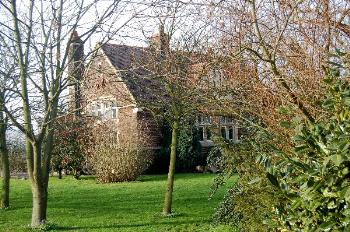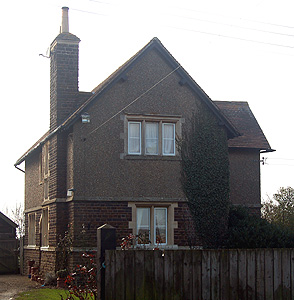Potsgrove School

The former Potsgrove School January 2007
The first Education Act was passed in 1870 (more correctly it was known as the Elementary Education Act). It was a milestone in the provision of education in Britain demonstrating central government's unequivocal support for education of all classes across the country. It also sought to secularise education by allowing the creation of School Boards. These were groups of representatives, elected by the local ratepayers and the Board had the powers to raise funds to form a local rate to support local education, build and run schools, pay the fees of the poorest children, make local school attendance compulsory between the ages of 5 and 13 and could even support local church schools, though in practice they replaced them, turning them into Board run schools (known as Board Schools). Naturally, and luckily for local historians, the Act required a questionnaire of local schools in 1870. The return for Potsgrove stated that there was: “No efficient school” and that a school for 68 children was required at Sheep Lane: “If Potsgrove Parish School be at once made efficient by the appointment of a certificated teacher, no further accommodation will be required”. This parish school was the Saint John's church-school built by Rev. E. Norman Coles in 1862
On 15th January 1896 a School Board was formed for Battlesden cum Potsgrove. The Duke of Bedford built a new school in Potsgrove village, opposite the church, which commenced on 5th December 1898 and was officially opened by the duke and duchess on 16th December. The Bedfordshire Times of 23rd December 1898 gives details:
“There was a numerous gathering of educationists and others in the little village of Pottesgrove on Tuesday, the occasion being the opening of the new Board School, which His Grace the Duke of Bedford has had erected for the Battlesden and Potsgrove United School Board District. The building is brick-faced, with local ironstone and Bath-stone dressings and internally is plastered with glazed brick dado, while the floors are of wood block. The school is admirably lighted, warmed and ventilated, and is also provided with all the necessary adjuncts in the form of furniture, books and apparatus, the cost of these also being defrayed by His Grace. He has likewise built a substantial residence for the schoolmistress conveniently near the school. The buildings have cost £3,000 and are let to the School Board at the peppercorn sum of 10s. per annum. A feature of the schoolroom is its division for classroom purposes by a collapsible screen, by the withdrawal of which the whole area is made available for public meetings. The parish of Pottesgrove is some five miles from Woburn Abbey. The area of the parish is 2,550 acres, it is entirely agricultural and has a rateable value of £2,637, and a population of 238. The Dukes of Bedford have always been very keen in following out the Education Act of 1870, and wherever necessary on their estates they have provided educational facilities by building schools. Following this policy, the duke has just built the new school in Pottesgrove., where the actual requirement was for forty children, but he has provided accommodation for seventy-seven. If the buildings had been erected by the School Board an annual charge of £170, equal to a rate of 4s. 10d. in the £ would have been entailed”.
“At Tuesday’s ceremony there were present their Graces the Duke and Duchess of Bedford, Sir Charles Elliott, K. C. S. I, Deputy Chairman of the London School Board, Lady Elliott, Major Villiers Downes, Mr. Phillpotts (Headmaster of Bedford Grammar School), Mr. C. P. Hall, Mr. E. Ransom (Bedford), Mr. Roper, Mr. E. E. Prothero, Mr. T. T. Wing, Mr. A. J. Pilkington (the architect), Mr. F. Butler, Mrs. Jebb and the following members of the Battlesden and Pottesgrove United District School Board: the Rev. H. H. Jebb, Messrs. R. Mossman, J. Mossman, R. Hedges and J. Watson”.
“After the Duke of Duchess of Bedford, Sir Charles and Lady Elliott, with other ladies and gentlemen made a tour of inspection of the buildings, a hymn was sung in the schoolroom, and then the school children very creditably performed drill, the various movements being watched with evident interest by the company. At the termination of the exercises the Duke of Bedford, who presided, announced to the children that the School Board had given them a holiday in honour of the occasion. He was also asked to state that Sir Charles Elliott was very pleased with what he had seen. He hoped that they would have a pleasant holiday. Mr. Jebb thereupon called for three cheers for the Duke and Duchess. These having been heartily given, an address was presented to their Graces from the children who offered their “best thanks for the new school”. The address bore the signature of every child attending the school. The Duke, in acknowledging the address, said that the Duchess and himself appreciated it very much, and would most certainly preserve it as an interesting memento of the occasion”.
A land mark Education Act was passed in 1902, coming into effect in 1903. It disbanded the School Boards and gave day to day running of education to newly formed Local Education Authorities, usually the county council, as in Bedfordshire. The old Board Schools thus became Council Schools whilst the old National, British and other non-Board schools became known as Public Elementary Schools. Potsgrove Board School thus became Potsgrove Council School.
Potsgrove Council School itself was closed, after a life of just eighteen years, in 1916 due to the small number of pupils on the roll. Bedfordshire & Luton Archives & Records Service has a scrapbook of reports by the Schools Inspector on most schools in the county made for the period just before the First World War through the inter-war years [E/IN1/1]. It contains just one report for Potsgrove, dated 1911, when 24 was the average attendance: "This small School is carefully and intelligently taught. Order and tone are very good indeed and the level of efficiency reached is, on the whole, creditable. More thorough and systematic revision of back work is desirable, particularly in History and Geography. The Gallery in the Infants' room should be removed without further delay".
The last entry in the log book, 20th April, reads: “The Rev. H. S. Watts visited to-day. Average for the week 10 out of 50. The School is closed after April 20 1916 by consent of the Board of Education. Resigned my charge this day M .S. Foster, Certificated Teacher”. Today [2013] the former school is a private house.

The School House February 2012